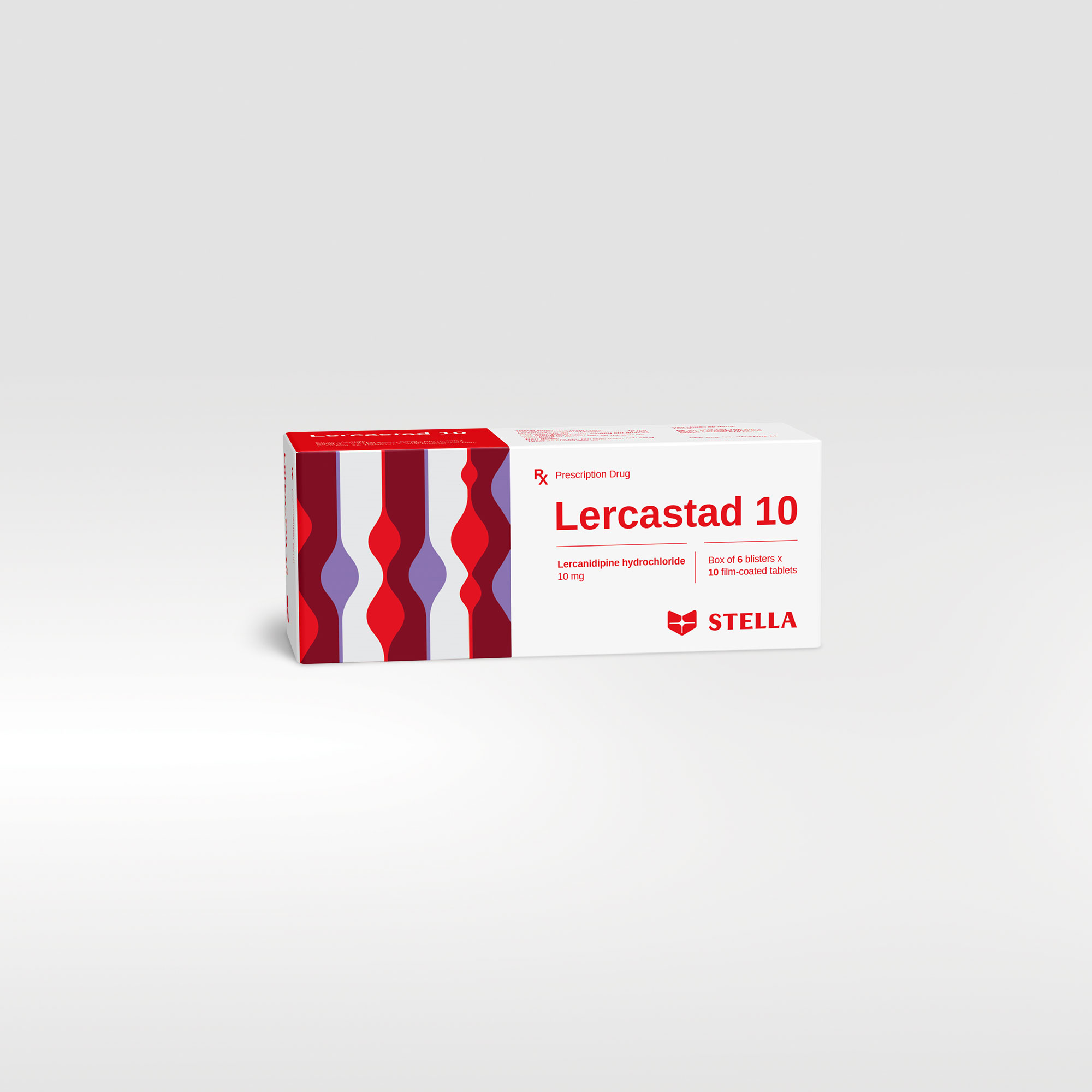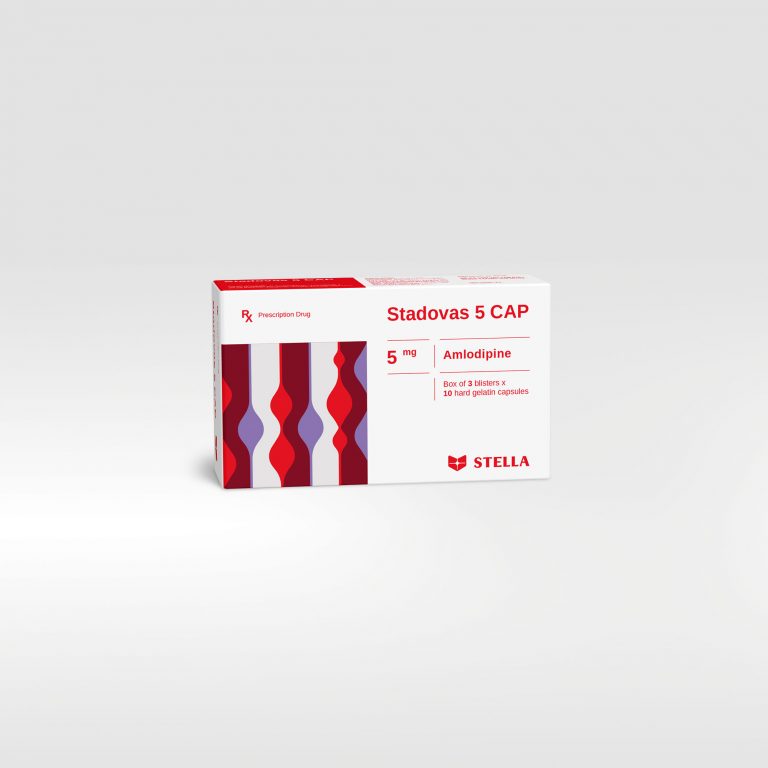Lercastad 10 Rx
Lercanidipine is a calcium antagonist of the dihydropyridine group and inhibits the transmembrane influx of calcium into cardiac and smooth muscle. Since the vasodilatation induced by lercanidipine hydrochloride is gradual in onset, acute hypotension with reflex tachycardia has rarely been observed in hypertensive patients.
| Pack size | Box of 30 tablets, 60 tablets |
| Shelf-life | 36 months |
| Composition | Lercanidipine hydrochloride |
| Dosage forms and strengths | Film-coated tablet: 10 mg. |




